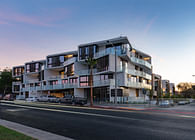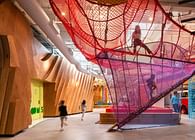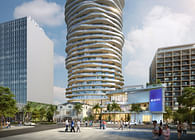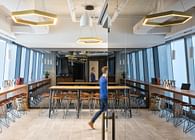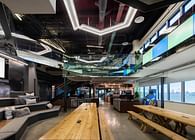
Culver City, CA
Bordered by a dense forest along Oregon’s South Coast, Bay Point Landing was designed as a private retreat and place to connect with the sea. Overlooking more than a mile of secluded beachfront, the camps were organized to recall a natural riparian past of marsh islands separated by streams flowing into Coos Bay Lagoon. Preserving the bay’s natural beauty, the design clarifies the character of the 103-acre inlet site by revealing the landscape and its history.
Bay Point Landing emerge from a reclaimed mass of land. After years of storing bark waste from sawmill operations, the site became unsuitable for traditional foundations and larger buildings. Embracing this condition, a series of smaller structures were designed as a network of communal camps. Bringing visitors together, these camps center around a main pavilion offering year-round amenities for more sustainable and constant use.
Situated between the camps and the waterfront, a new wood-and-glass clubhouse is oriented to views across the horizon. Floating above the marshland on a series of piers, the shelter includes an indoor pool, recreation areas, meeting rooms, and entertainment spaces. The structures’ angled, sloping roofs reflect the local vernacular of seaside huts and echo the marsh island typology. These rooftops slope upward in two directions to meet the sky, while also directing the eye toward the core of the structure.
Anchoring the site, the clubhouse promotes the kind of experiences that have made this area a well-known and sought after travel destination. Large windows and full-height expanses of diagonally wood-braced glass capture expansive views in all directions. A series of outdoor terraces and elevated decks surround the pavilion and provide space for enjoying the bay. Beyond the clubhouse, uninterrupted parking has been turned into private camping areas with landscaped green spaces, offering outdoor play and game areas
Status: Built
Location: Coos Bay, OR, US
Firm Role: Architect



